The closing of the castle interiors, dictated by the need to fight the Sars-Cov-2 virus pandemic, somehow prompts guests visiting the premises of the Malbork Castle Museum to pay more attention to the numerous architectural elements displayed there, which are not related to the Teutonic or Polish royal period of this building.
The modern granite and sandstone porch posts or portal elements, already well embedded in the castle landscape and its topography, have been exhibited in the open spaces of the Malbork stronghold for over a hundred years, are fragments of bourgeois tenement houses from Gdańsk, Elbląg, but also Malbork. They are not accompanied by any commentary in the traditional form of a caption or insertion into the narrative of the audio-guide. The reason for this is, on the one hand, the function of historic decorations assigned to them in the castle walls. On the other hand, due to the poor recognition of these elements, where apart from their functions and more or less precise dating, we are not able to provide specific data about their place of origin, original context and “paths” that led them to the castle’s “green areas”.
Of course, on a general level, their castle history is known to us, among others from reading the Reports of the Management Board of the Society for Reconstruction and Beautification of the Malbork Castle discussed in this series.
It is known that the appearance of these functionally and temporarily “foreign” monuments in the castle, which was still being restored at that time, was related to the intention to create a representative collection of architectural details, including the construction heritage of the former Order and Royal Prussia. Therefore, the collection was to include medieval and early modern testimonies of the local building culture. However, as it results from the content of the Reports, architectural elements from outside the aforementioned historical and cultural area could also be included. Creating a collection of a future museum institution at the stage of restoration works of its seat is one of the most comprehensively reported elements of the Society’s activities. Let the example of the aforementioned collection of architectural details, of which the mentioned examples of groups of monuments were an integral part, despite them being kept outside the warehouses, be an illustration of the social contribution to the process of building the collection.
The relevant fragment describing the activities of the Society and the local community can be found in the Report of the Management Board of the Society for the Reconstruction and Beautification of the Malbork Castle for the period from October 1, 1902 to October 1, 1905:
[…] we would like [the Society ˗ B.B.] to formulate a request to site managers that the elements of the old construction, although they may seem quite mediocre, and in fact are valuable, should be kept for the time of construction and transferred to the local [castle B.B.] collection. The expenses and transport costs will be willingly assumed by the Castle Reconstruction Board with the support of the Society.
Just as medieval construction in the monastic state combined brick with other materials: granite, sandstone, limestone transported across the sea from Gotland, after all, with such a well-prepared screed gypsum (artificial stone), the collection of our “building museum” also includes these examples of materials . They are located in the relevant sections of the brick collection. However, heavy objects, not exposed to the risk of theft, are more convenient to display outdoors. For example, the most important limestone objects and sculptures were placed in the arcades of the courtyard of the High Castle, others, weather-resistant, i.e. granite columns, stoups, stones from the gates, cannonballs ˗ on the terraces of the High Castle and in the courtyards, at the roads and entrances, where they will attract sight of visitors. It is impossible to list all the names to which we owe these precious objects. Let’s list the latest acquisitions given or obtained in return for a refund:
Count Roland von Brünneck, lawyer and landowner from Bałoszyce (German: Bellschwitz) – granite bowl;
Karol Staliński, pastor of the parish of St. Anna in Sztum – peat bricks, a pillar, a granite stoup;
Carl Matthias, master of the construction guild from Elbląg – granite pillar, bumpers, pillar;
Carl Schmalfeld and Franz Reich, construction entrepreneurs and brickyard owners (F. Schmalfeld u. Reich, Panklau) from Elbląg – granite bases for pre-threshold balls;
Johann Müller, a carpenter from Elbląg – porter posts, granite spheres, fireplaces; Leser Gieldzinski, merchant and collector from Gdańsk – portal ornaments;
the city of Malbork – cannon barrel, granite pillar;
Carl Jacob Wilhelm Canditt, bakery master from Malbork – granite pillar from the bridge gate;
Pasewark from Malbork – a carved limestone console;
Otto Bischoff, a jeweler from Malbork – remains of beautiful fireplace sculptures;
Hermann Still, a mason from Malbork – a decorative sandstone pillar.
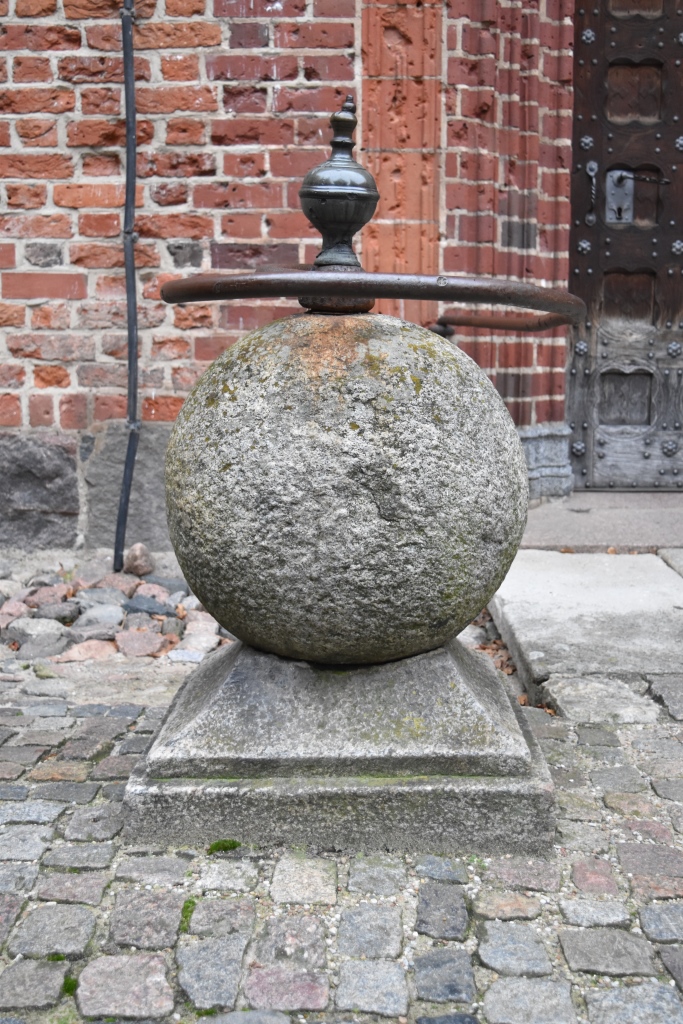
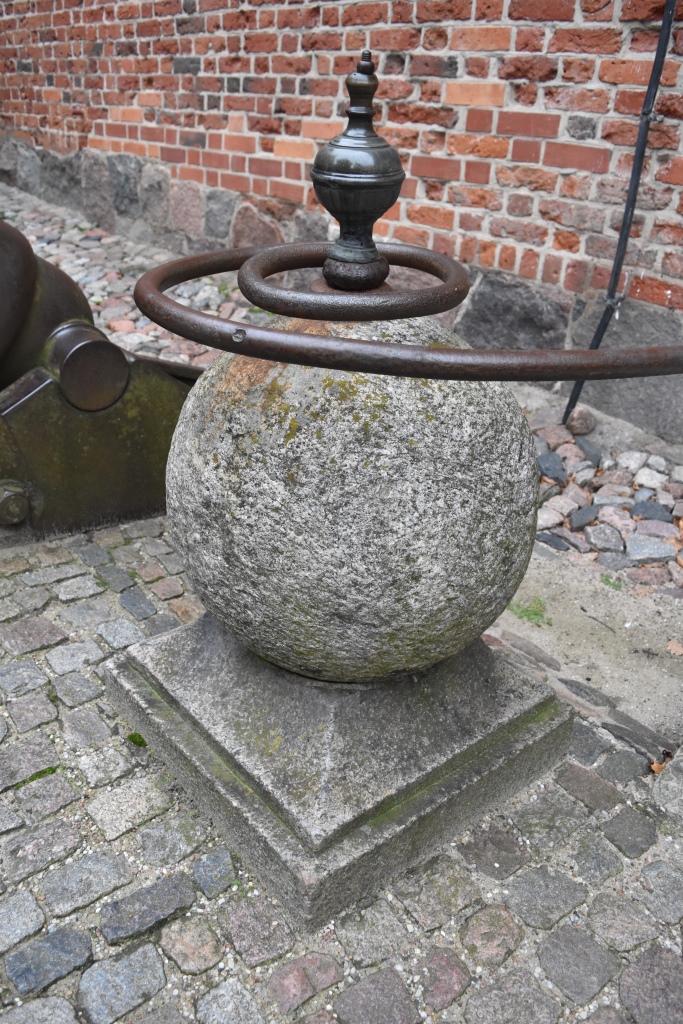
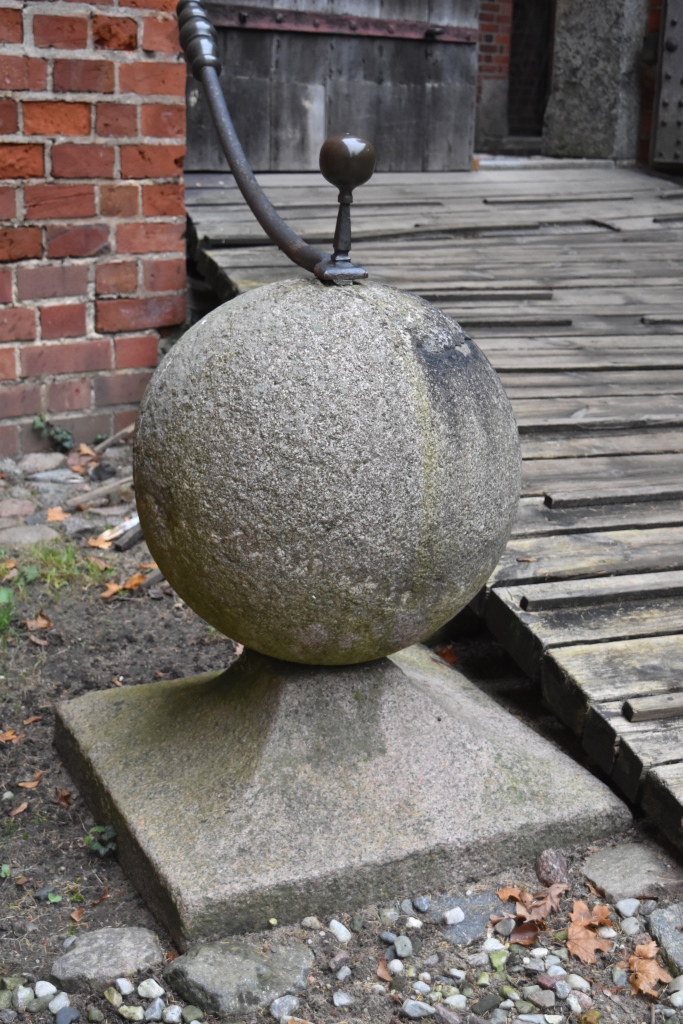
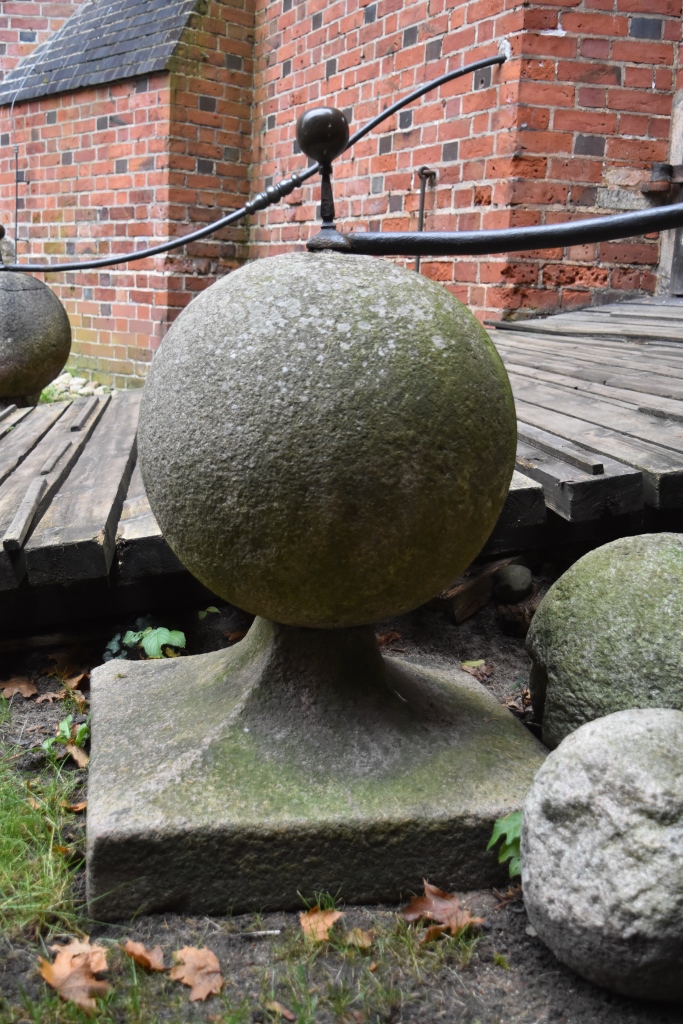
ILL. 1-2. Bases for porter balls in front of the Great Refectory, granite, Elbląg workshop, around 1750 (photo: B. Butryn).
ILL. 3-4. Bases for porch balls on the northern zwinger of the High Castle, granite, Elbląg workshop, around 1750 (photo: B. Butryn).
The cited section of the Report ends with a list of donors, which theoretically enables the reconstruction of the provenance of the architectural elements exhibited at the Castle Museum till this day. In the following, we will try to link the elements described above with specific monuments whose identity is most likely confirmed.
The granite bowl donated by Count Brünnecek may be identical to a large reservoir for holy water (today in the Church of St. John in Malbork), which still around 1950 was located on the eastern zwinger of the High Castle.
A granite stoup from the parish priest of Stalinski is probably a monument exhibited today in the Palace of the Grand Masters, and before 1945 at the Golden Gate. It is difficult to say whether the other relics donated by the parish priest from Sztum were related to the works he carried out in 1899 as an investor in the southern wing of the Sztum castle, where a Catholic orphanage operated from March 1900.
Brought from Elbląg, thanks to the owners of the brickworks in Pęklewo by Schmalfeld and Reich, the granite bases for porter balls are most likely those exhibited today in front of the entrance to the great Refectory and at the gate to the northern zwinger (Figures 1-4).
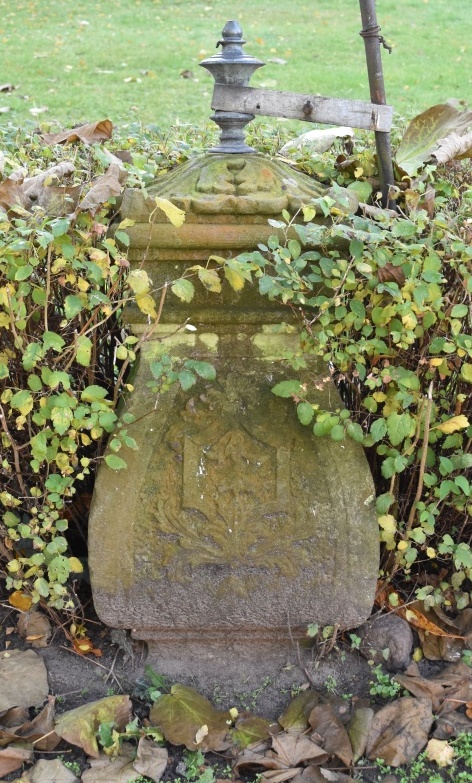
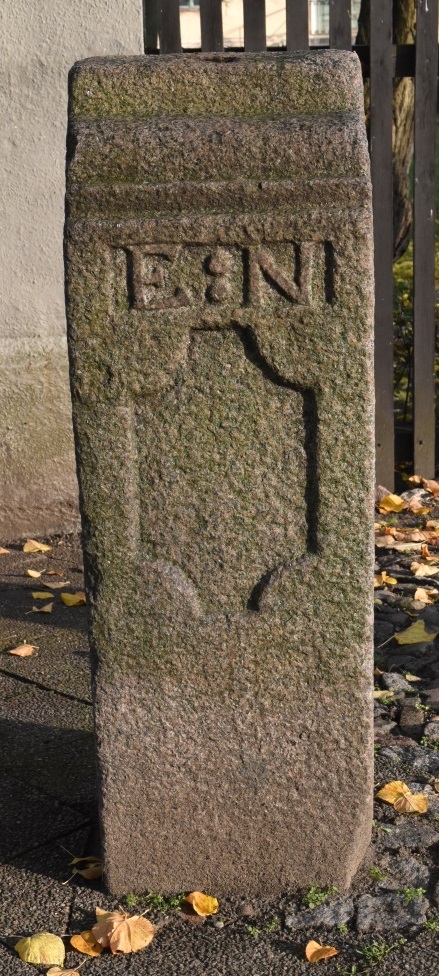
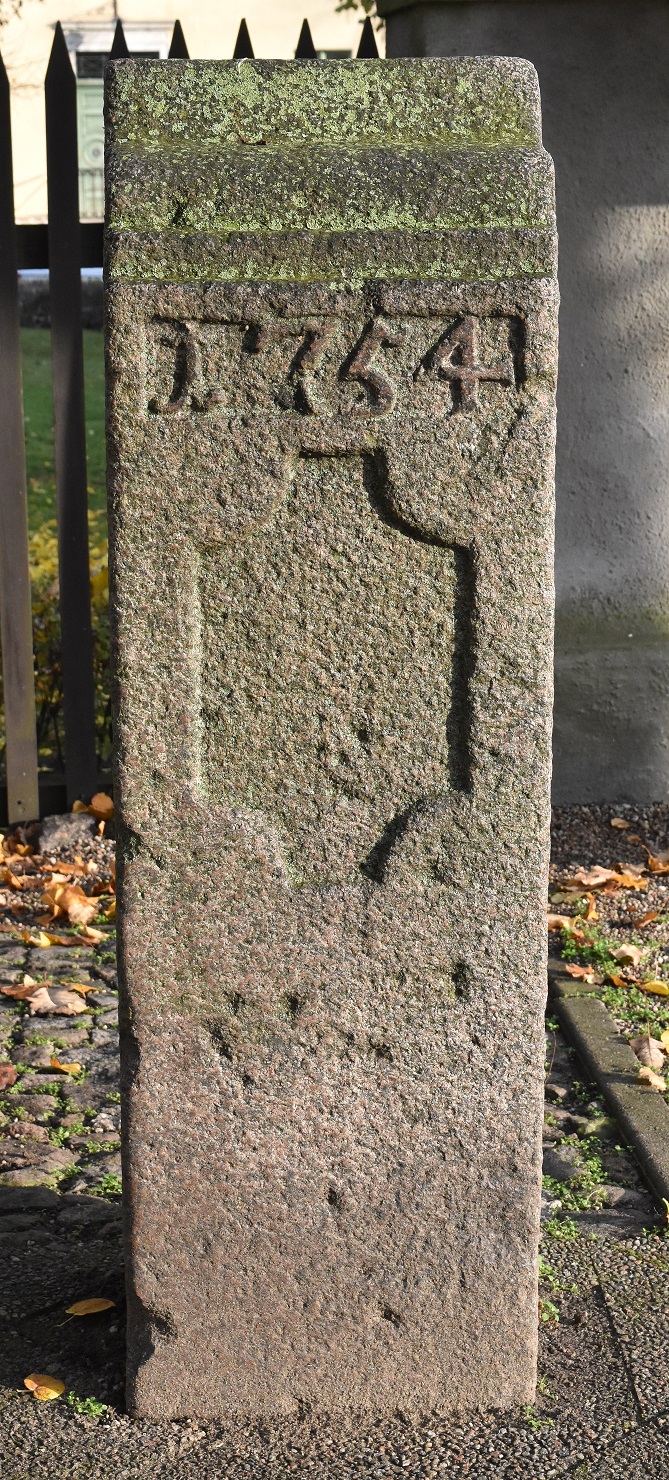


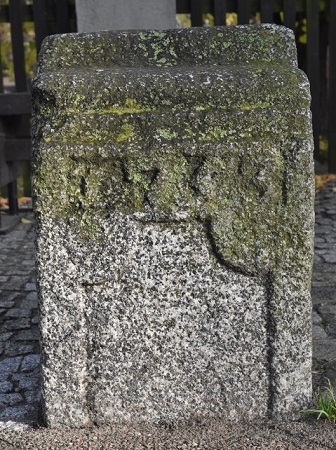

ILL. 5 a-g. Porch pillars in the Outskirts, sandstone, Elbląg workshop, ca. 1750, / granite, Elbląg workshop, 1753, 1754 and 1770 (photo: B. Butryn).
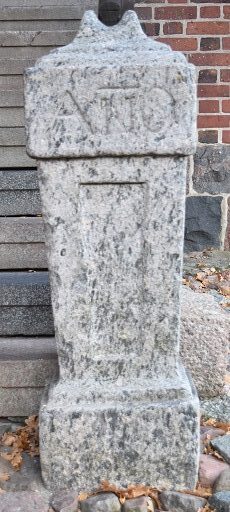


ILL. 6 a-c. Porter columns at the Middle Castle, granite, Elbląg workshop, 1755 (photo: B. Butryn).
It is not certain whether all the porch pillars, most of which are located today in the Outskirts (Fig. 5a-g), but also in the Middle Castle (Fig. 6a-c) and on the southern zwinger (Fig. 7), come from Elbląg. Johann Müller, together with his son and employees of his carpentry shop, actively participating in the restoration of the castle, was also heavily involved in searching for monuments that might be of interest to Conrad Steinbrecht. Müller’s correspondence to Steinbrecht on these issues is in the National Archives in Malbork, but it is not helpful in determining the provenance of pre-threshold posts, some of which may come from Malbork or Gdańsk. Granite spheres handed over by a master carpenter will also remain unrecognizable. The fireplaces mentioned in the Report are two monuments inserted in 1910 into the interior of the bathhouse complex at the Middle Castle (Figs. 8 and 9). The third example of mannerist fireplace fittings on display (Fig. 10) is a damaged relic from an undefined tenement house in Malbork, donated by the jeweler Bischoff; Before it was put into the Bathhouse building (today a museum shop), it was supplemented, in the spring of 1910, with the missing parts by the Berlin sculptor Carl Diltmer (Figures 11a-b and 12).

ILL. 7. Porch posts on the southern scabbard of the High Castle, sandstone, Elbląg workshop, around 1750 (photo: B. Butryn).
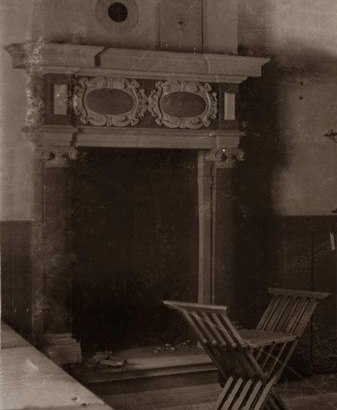
ILL. 8. Baroque fireplace setting from an undefined Elbląg tenement house, sandstone, Elbląg workshop, around 1640; Marienburg Baujahr 1916 Fig. 4.

ILL. 9. Setting of a mannerist fireplace from an unspecified Elbląg tenement house, sandstone, Elbląg workshop, around 1600; Marienburg Baujhar 1916 Fig. 8.
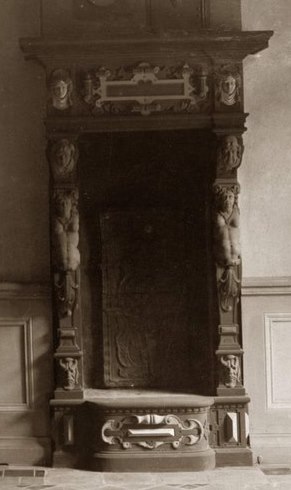
ILL. 10. Setting of a mannerist fireplace from an undefined Malbork tenement house, sandstone, Gdańsk or Elbląg workshop, around 1600; Marienburg Baujahr 1916 Fig. 7.
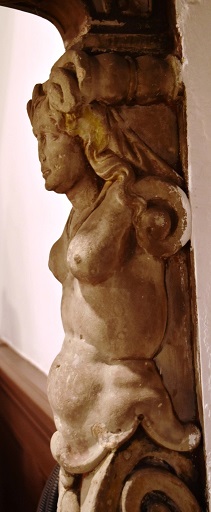
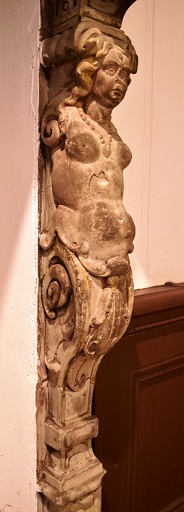
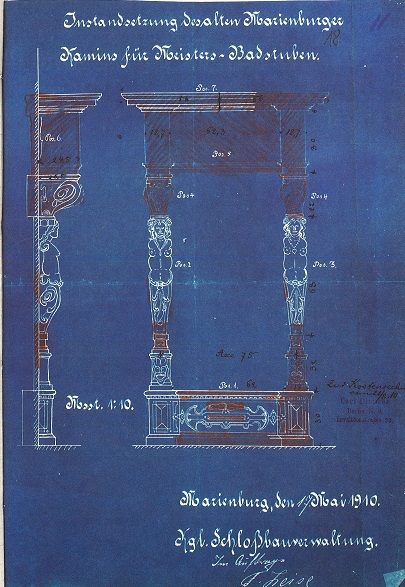
ILL. 11 a-b. Details of a fireplace from a tenement house in Malbork in the Bathhouse building in front of the Great Refectory, present state (photo by B. Butryn).
ILL. 12. Inventory and design drawing of elements of the Malbork fireplace, in white, original parts provided by the jeweler Bischoff, red marks the scope of works by the sculptor Diltmer, collection of AP Malbork, ref. 205/505, p. 18, after M. Mieśmieński, Catalog of architectural drawings of the former Castle Reconstruction Board in Malbork (1817-1945), Malbork 2019, p. 382.
The last monument that can be identified with certainty is the portal of the tenement house number 5 at ul. Grobla IV in Gdańsk (illustration 13). This exceptionally ornate monument, even by the high standards of Gdańsk tenement houses, was probably purchased around 1900 by Gieldziński from the stonemason Mielkau, who was the owner of this property at the time. In 1902, its new owners Ottielie and Clara Wangner planned the reconstruction of its ground floor and the project was prepared by the master builder A. Hein. The following year, the painter Loceytis commissioned another project to rebuild the ground floor, with a large display window (the design was prepared by Walther Marks). This clearly indicates that the ground floor of this tenement house was significantly transformed at the beginning of the 20th century. The history of the transfer of this portal to Malbork is not limited only to its transfer by Gieldziński. Most likely, before the planned construction works, the Gdańsk Construction Police issued the conditions for the reconstruction of the facade of the tenement house at Grobla IV, recommending that a copy of the portal should be made (this type of conservation prevention, especially for sandstone elements, was common at that time). The owner of the tenement house or a potential buyer interested in acquiring the portal incurred the cost of forging a copy of it, which was placed in lieu of the original. Today, the copy is in another tenement house at 38 Szeroka Street. The elements of the original portal, unfortunately damaged today and scattered around the museum warehouses (Fig. 14), are available to visitors in few details in the lapidarium located on the southern wall of the High Castle.
(by. B. Butryn)

ILL. 13. Portal of the tenement house at ul. Grobla IV No. 5 in the photo taken before 1900; collection of BG PAN (reference number Alf IV / 4/49).
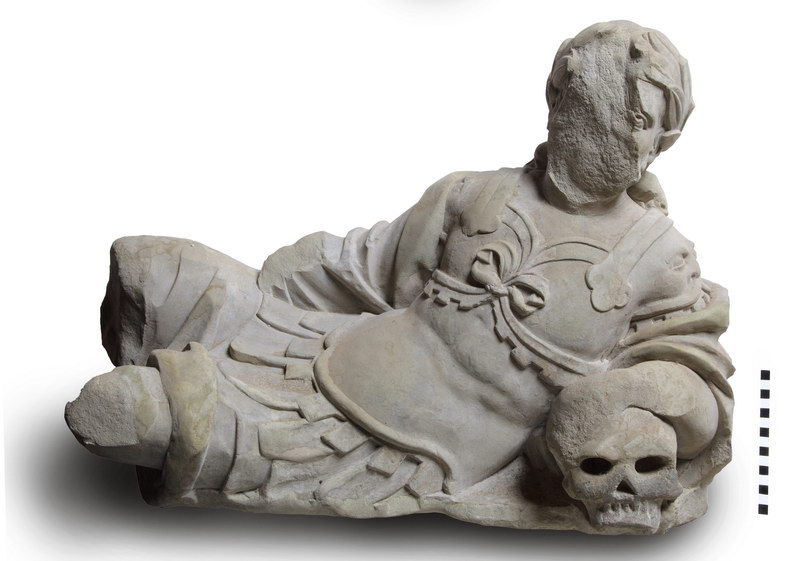
ILL. 14. A figure of a Roman legionnaire crowning the portal of the tenement house on ul. Dike IV, sandstone, Gdańsk workshop, 1647 (photo by L. Okońsk
